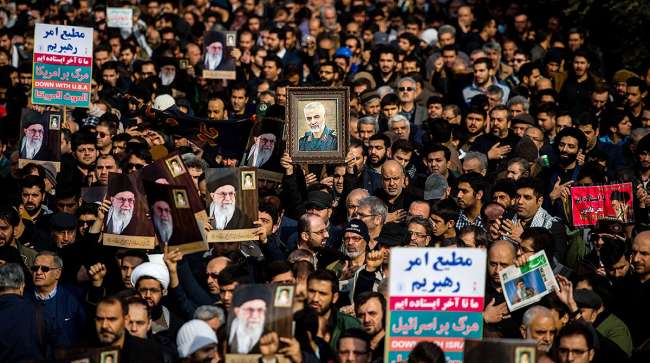Bloomberg News
Oil Set for Biggest Weekly Loss Since July as Mideast Risk Eases

[Stay on top of transportation news: Get TTNews in your inbox.]
Oil is headed for its biggest weekly loss since July as the prospect of an immediate confrontation between the U.S. and Iran abated, allaying fears of disruption to Middle East energy supplies.
Futures initially soared to an eight-month high above $65 a barrel in New York on Jan. 8 as Washington and Tehran faced off after the killing of a top Iranian general, but all of this year’s gains dissipated as the two adversaries backed away from a full-scale conflict. Crude is now trading back below $60, down 6% for the week.
The aborted rally is another sign that global oil markets remain comfortably supplied, largely because of the U.S. shale-oil revolution. Nationwide crude inventories increased by 1.16 million barrels last week despite expectations for a decline, and gasoline stockpiles hit a 10-month high, government data showed on Jan. 8.

In Episode 23 of RoadSigns, we look ahead to trucking's future by looking back. Hear a snippet from host Seth Clevenger, above, and get the full program by going to RoadSigns.TTNews.com.
West Texas Intermediate crude for February delivery fell 27 cents to $59.29 a barrel on the New York Mercantile Exchange as of 8:57 a.m. local time Jan. 10. Brent futures for March settlement slipped 11 cents to $65.26 a barrel on the ICE Futures Europe exchange.
“The situation in the oil market has eased surprisingly quickly,” said Carsten Fritsch, an analyst at Commerzbank AG in Frankfurt, Germany. “While the start of the week was still dominated by concerns about the conflict between the U.S. and Iran escalating and possibly resulting in disruptions to oil shipments, this topic now appears to be considered closed.”
The conflict has so far spared output and exports from the Middle East, and the global market has a comfortable supply cushion. OPEC members are sitting on huge amounts of spare capacity after cutting production for most of the past three years, and American production is increasing.
However, tensions in the Persian Gulf remain elevated as President Donald Trump continues to squeeze Tehran with stringent economic sanctions over its nuclear program. Less than four months ago, half of Saudi Arabia’s production capacity was temporarily disabled in a missile strike — which the U.S. blames on Iran but the Islamic Republic refutes — a stark reminder of the vulnerability of facilities in the region that supplies about a third of the world’s oil.
“Although the threat of outright war has receded, the industry remains on edge, expecting disruptions like shipping incidents or attacks on oil facilities on par with events last year,” Eurasia Group analysts Robert Johnston and Henning Gloystein said in a note.
Want more news? Listen to today's daily briefing:




